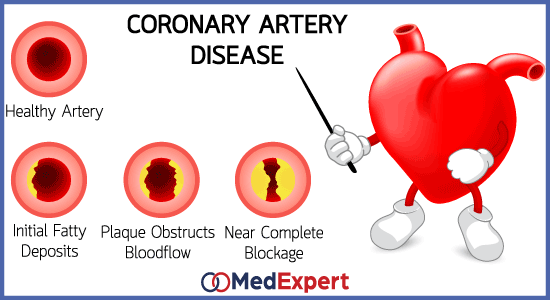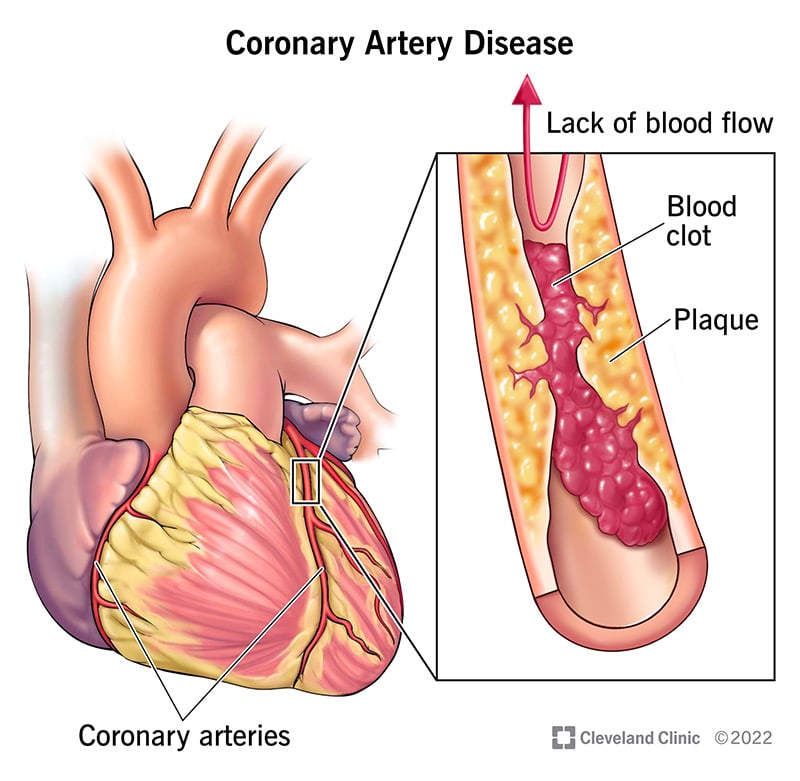
Although there is no specific cure for CAD, treatments for this condition can help people live more active lives. Patients with this condition need to make positive lifestyle changes and undergo medical tests to identify the cause of their disease. Medications may also be prescribed, including beta-blockers that can slow down the heart rate and blood pressure and nitroglycerin to reduce the demand on the heart and alleviate chest pain. Despite the lack of a definitive cure for CAD, early detection and treatment of this heart disease is essential for the survival of the patient.
Atherosclerosis is a disease of the arteries that limits blood flow to the heart muscle. It is the accumulation of plaque inside the arteries that restricts the flow of blood to the heart. There are many possible causes of coronary artery disease, including genetic defects, inflammation, and fatty acids. Fortunately, there are several treatments for CAD, including medications for atherosclerosis. In addition to lifestyle changes, treatments can also include medications to control symptoms and reduce the risk of a heart attack.
The most common treatment for CHD is medication. The best way to avoid a heart attack is to maintain healthy cholesterol levels. It is very important to eat a healthy diet and avoid unhealthy fats. These foods are rich in antioxidants and may help prevent heart attacks. In addition, you should drink plenty of water, as this will protect the cardiovascular system from damage. By exercising regularly, you will reduce the risk of a heart attack.
While a silent heart attack occurs without warning, most people have at least one symptom before the onset of an attack. The most common symptoms include chest pain, back pain, neck pain, jaw pain, and stomach pain. In addition, patients may also have difficulty breathing, nausea, or vomiting. Women are more likely to show atypical symptoms than men. It is important to pay attention to the signals your body sends. If you feel any of these symptoms, seek immediate medical attention and additional treatment advice at https://sarjana.co.id/.

The symptoms of a silent heart attack are not as obvious as the symptoms of a normal heart attack. Most people experience symptoms before a heart attack. Some of these symptoms are chest pain, upper body pain, jaw pain, and neck pain. Some patients even experience difficulty breathing or vomiting. Those who are not aware of the symptoms should pay attention to their body. Some signs of an attack of coronary artery disease can be mistaken for indigestion or heartburn.
A silent heart attack occurs without any warning. However, most people will experience a symptom before the actual attack. The most common symptoms of a silent heart attack are chest pain in the upper body. Additionally, patients may experience difficulty breathing or experience nausea or vomiting. Other atypical symptoms include a feeling of heaviness and fatigue, and a decrease in the ability to move. The presence of these symptoms does not mean an attack has occurred. The symptoms may be an indication of atherosclerosis.
In most cases, a silent heart attack is a silent heart attack. While this type of heart attack does not cause any symptoms, most people experience some type of symptom prior to the attack. The most common symptoms include chest pain, back pain, jaw pain, and stomach pain. Some patients may also experience nausea and vomiting. If these symptoms are present, it is important to seek medical attention immediately. There is no cure for CAD, but it is a highly treatable condition.
There are several causes of CAD. Atherosclerosis is an inflammatory disease that damages the inner lining of the blood vessels in the heart. Certain factors are known to trigger inflammation. A high-fat diet, dietary preservatives, infections, and illnesses can all lead to inflammation. During an attack, a clot may form in the narrowed artery. Eventually, the blood will stop flowing, causing the patient to suffer a heart attack.
The most common symptom of CAD is angina. The condition is a type of pain in the chest. It can also affect the neck, arms, and jaw. It can be sudden or chronic, or it may develop gradually. Symptoms of a silent heart attack include a throbbing chest pain, nausea, and vomiting. In severe cases, it can be accompanied by a pronounced feeling of discomfort in the upper body.
